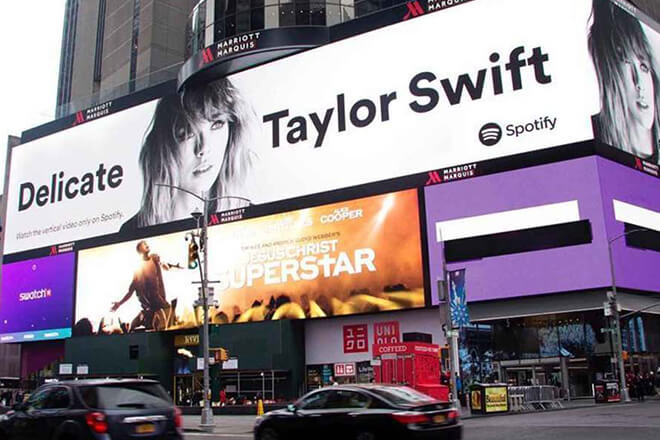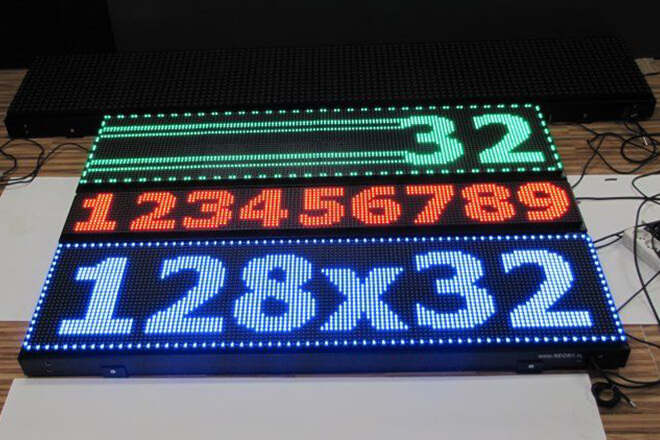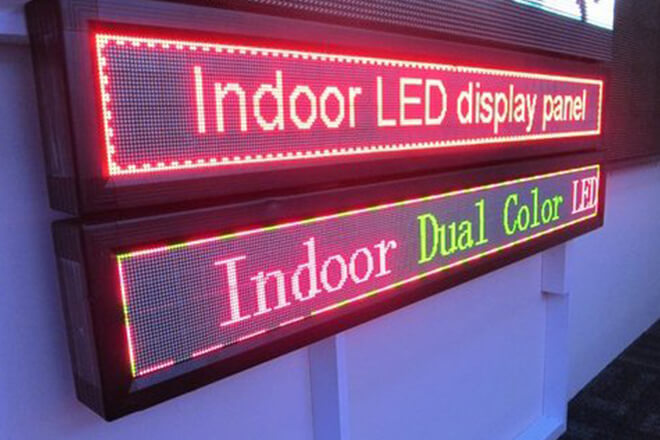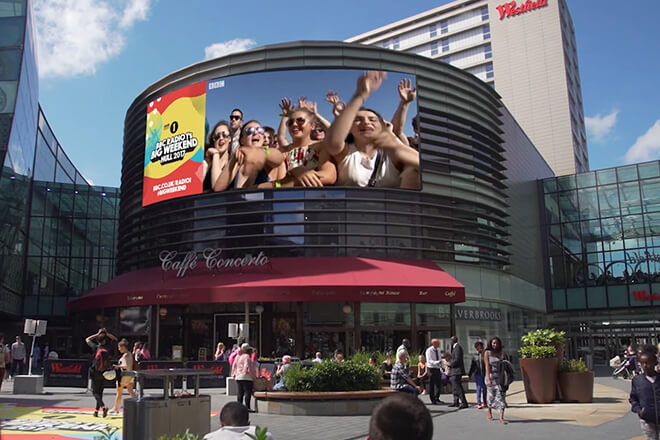
With the development of technology, full-color LED display has gained considerable popularity due to their ease of use and convenience.
You may be confused, what is a full-color screen? What is the difference between it and single-color and two-color LED screens?
Read on, the following content will give you the answer.
What is a full-color LED screen?
Full-color LED screen is a kind of LED screen with rich colors.
The full-color LED display is a combination of red light, green light, and blue light in a certain ratio, which is called full color. The three colors are matched in a ratio of 3:6:1, which is just pure white.
Features and advantages of full-color LED screens
The display effect of the full-color LED screen is quite good, there will be no particles, mosaics, etc., the color saturation is high, and the color display is also very uniform.
- Rich display methods
The screen has a variety of display methods, which can be moved up, down, left, and right, and can also be opened and closed in the middle, flashing, etc., and the display effect can ensure stability.
- Work around the clock
Because the full-color LED display itself has a cooling system, it also has anti-static, dust-proof, and other effects. So even if it is used around the clock, it will not be interrupted and has a long service life.
- Easy to control
You can directly use the editing and playing software to operate, and you can play audio and video, etc. It is very convenient to store the content you want to play in the control card and play it directly.
- Excellent display impact
Its display content is also obvious even in direct sunlight. Furthermore, the visual degree is excellent, and the clarity of the image can be guaranteed whether it is viewed horizontally or vertically.
Because the display effect of the full-color LED display is stable, and there are fault codes, etc., so daily maintenance is also very convenient. The screen is also cost-effective and has a long service life.
Classification of full-color LED screen
In-line LED screens, mostly used for outdoor screens and semi-outdoor screens.
Surface mount LED screen, referred to as surface mount, is generally an indoor display.
LED dot matrix screen, the packaging method is similar to 5050 and surface mount three-in-one. One, two, and three chips are respectively packaged in a lamp, corresponding to single-color, double-color, and full-color respectively. It is frequently used as an information screen, displaying words and basic images.
General dot-matrix displays are used indoors, mostly in low-end single-color and double-color displays, which are used to scroll and display text and pictures (two-color displays can play videos), and there are also full-color screens.
The difference between LED monochrome display, dual-color display, and full-color display
The main color components of the LED screen are red, green, and blue. There are also three composition types: single-color, two-color, and three-color. These three are what we often call monochrome display, two-color display, and full-color display (three-color is also called full-color).
- LED monochrome screen
The LED display screen composed of one color can only display text and simple graphics (such as the banners we often see on the door of mobile phone stores), mainly used in shops, banks, docks, bus stations, etc.
The main advantages of the LED monochrome display are cheap price, power saving, simple maintenance, and easy operation.

- LED dual-color screen
The pixels of the dual-color LED display is composed of two kinds of LED light-emitting lamp beads, so only two colors can be displayed. Both the two-color LED display and the full-color LED display can play video, but the playback effect is similar to that of a black-and-white TV.

- LED full-color screen
Composed of three colors, it has a more beautiful picture effect and more vivid colors. The display content is also rich and colorful, such as text, graphics, animation, video, live broadcast, etc. Suitable for various occasions, such as indoor halls, stages, airports, shopping malls, and so on.
The advantages of LED full-color display are good viewing effect, long life, low advertising cost, high brightness, and wide application.

What should be considered when choosing a perfect LED full-color screen?
1.The impact of white balance
One of the most significant indicators of LED display is the white balance effect. In color science, pure white is exhibited when the ratio of the three primary colors of red, green, and blue is 1:4.6:0.16. A small deviation in the actual ratio will result in a deviation in the white balance. In general, pay attention to whether the white is a blue or yellow-green phenomenon.
2.Reduced color
The LED screen’s color reduction is referred to as color reduction. To guarantee the realism of the image, the color displayed on the LED screen should be very consistent with the color of the playback source.
The audience of the LED display is directly influenced by the extent of the viewing angle, so the larger, the better. The packing technique used to package the die largely determines the size of the viewing angle.
4.Flatness
To prevent image distortion, the surface flatness of the LED panel needs to be within 1mm. Dead angles will result from partial protrusions or gaps in the screen’s viewing angle. The manufacturing method primarily determines the flatness quality.
To guarantee the display screen operates normally, the brightness of the indoor full-color screen must be above 800cd/m2, and the brightness of the outdoor full-color screen must be above 1500cd/m2. Otherwise, the brightness is too low, making it difficult to see the displayed picture. The grade of the LED lamp beads primarily affects brightness.
Conclusion
Since you now have a clearer understanding of the different types of LED displays, it will be easier for you to choose the correct color LED screen for your specific needs. Or you can contact us, let us evaluate your needs, and help you choose a full-color LED screen that matches your needs faster.
